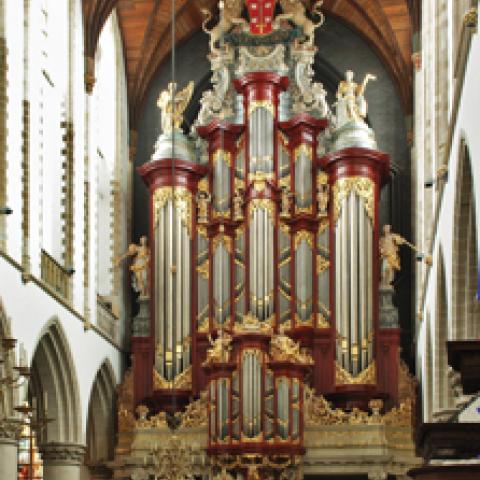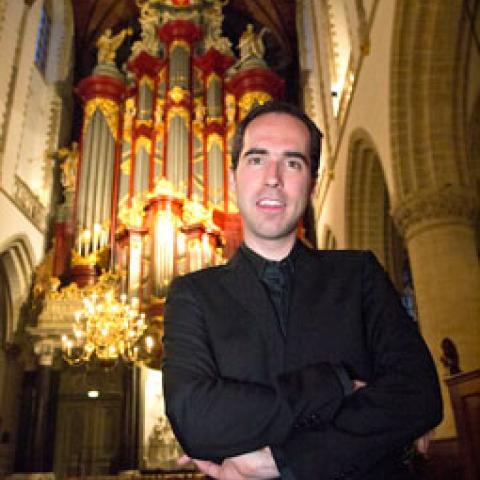
David Cassan (France) was named winner of the 50th International Haarlem Organ Improvisation Competition. Lukas Grimm (Germany) was awarded the Audience Prize. The finale took place July 18 in St. Bavo’s church in Haarlem, the Netherlands. The four finalists—David Cassan (France), Tobias Wittmann (Germany), Morten Ladehoff (Denmark), and Lukas Grimm (Germany)—were given the theme an hour prior to their performance; pencil and paper were their only preparatory tools. The theme for this 50th edition was specially composed by Louis Andriessen, who thus wrote his first work for the organ, and in so doing clearly looked back over his shoulder to his father Hendrik Andriessen.
Earlier in the week, eight contestants from five countries improvised on the Müller organ in St Bavo’s on a theme by the Viennese organist Hans Haselböck, threefold winner of the competition in the years 1958–1960. On the romantic Cavaillé-Coll organ in the Philharmonie concert hall they subsequently improvised on material by the composer Roderik de Man, with videos for the audience created by the sound and video artist Marcel Wierckx.
The jury, chaired by Stephen Taylor, included five internationally renowned organists: David Briggs (Canada), Jürgen Essl (Germany), Zuzana Ferjencikova (Slovakia/France), Gilbert Amy (France), and Jan Hage (the Netherlands).
David Cassan studied at the conservatories of Paris and Lyon. He won prizes at Dudelange (Luxembourg) and Saint Albans (England) and is currently organist of the Notre-Dame de Lourdes in Paris.
For information: www.organfestival.nl
Photo credit: Cor van Gastel





